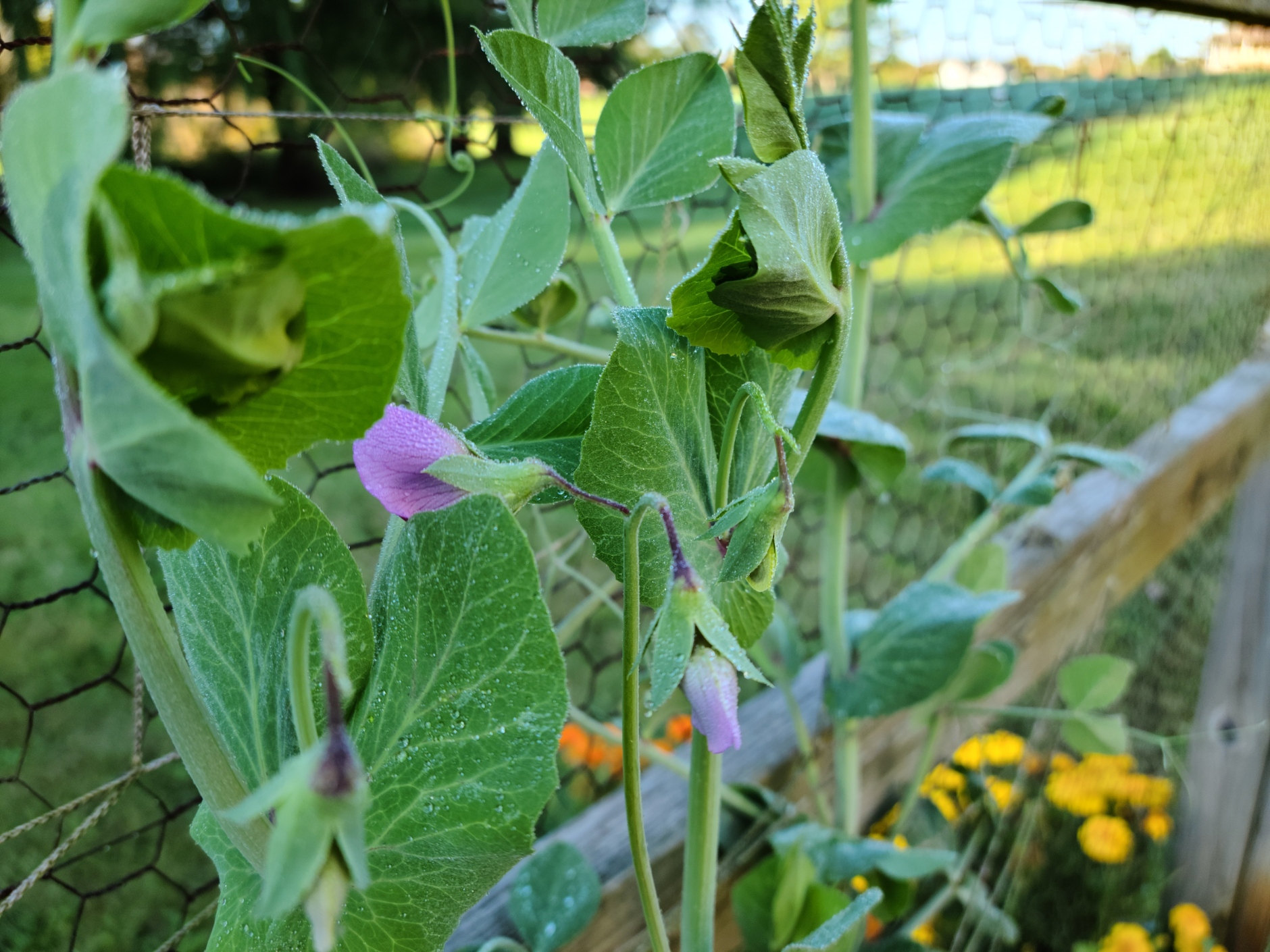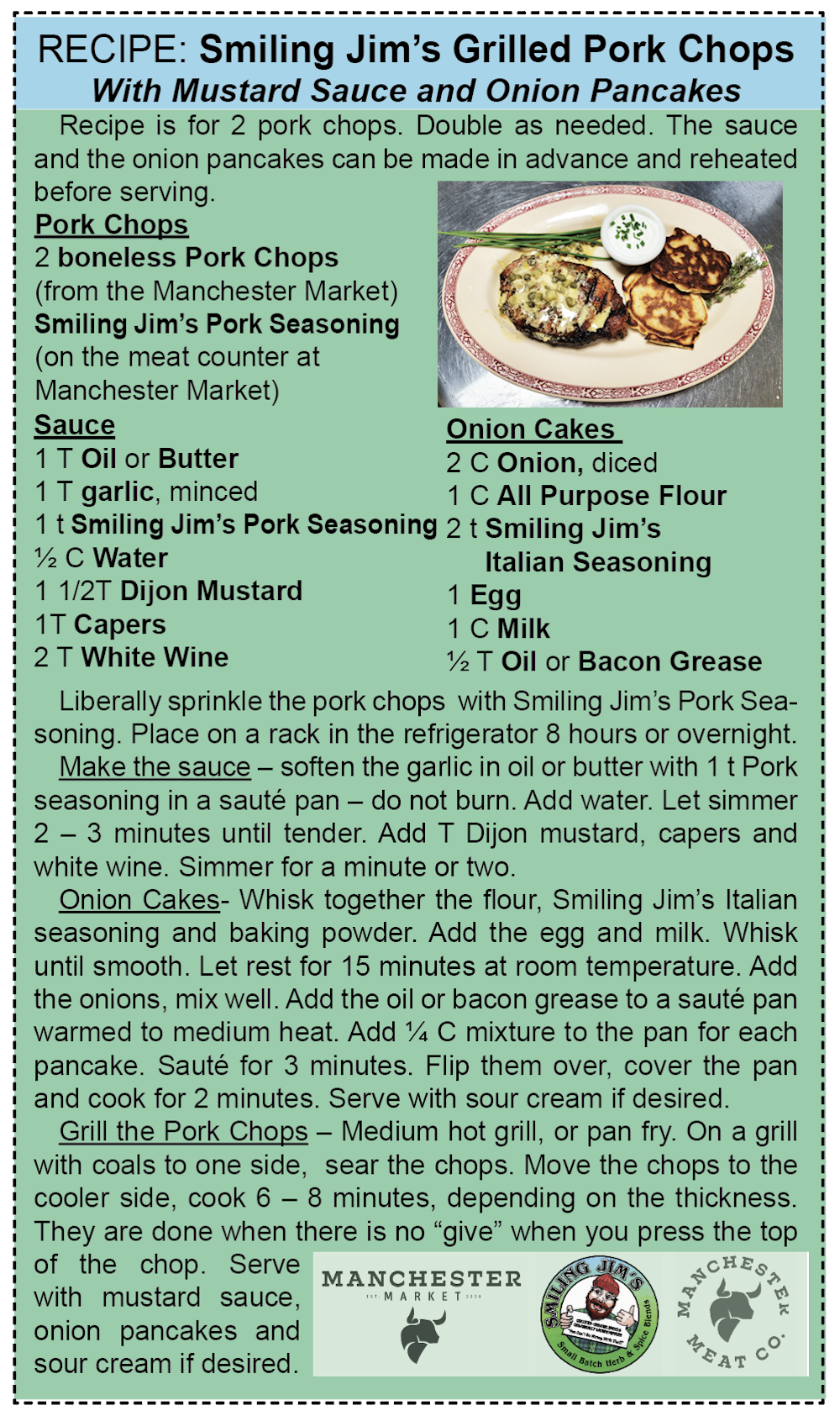September 2021 Gardening Advice

fall peas
submitted by Jennifer Fairfield, Garden Mill and Manchester Community & School Gardens
Well, as usual, here we are in October, and I have absolutely no idea where the summer went. I vaguely remember getting some vegetables from my garden this year — though it was definitely not my best garden year because of all the rain that led to all kinds of diseases. I do still have some things producing — especially kale, which seems to be oblivious to everything except hungry caterpillars and slugs. Some of my herbs are still going strong too and will likely continue to do so until we get some really cold weather. I am holding out hope that the late peas I planted (probably a little too late) may yet have time to produce, and I put in some very late cabbage, thinking I might get lucky with those, as well. Audrey Hepburn once said, “To plant a garden is to believe in tomorrow.” These late plantings are my inner optimist showing!
We should make the best of the weather we are getting now, since we are all but guaranteed to get light frosts by mid-month and killing frosts by the end of the month. Even with those chilling thoughts, there’s still much we can do in our yards and gardens this month — in fact, October is one of my favorite times to be outside working, as the weather tends to be so much more to my liking than the heat of summer!
Vegetable Garden:
Keep protective fleece row covers handy if you still have things growing in your garden, and want to keep the frosts we will definitely see at some point this month from ending their growing days before you are ready for them to be over. Some crops, such as kale, cabbage, and broccoli can take a bit of cold, but most will not survive frost, especially when the temperature dips below 28°.
If you still have any warm-weather produce in your garden, lucky you! Be sure to harvest it early in the month. Take advantage of the cooler weather to do some canning and freezing of the last of your garden’s bounty, while it’s not too hot to want to have the stove turned on.
Plant garlic after we’ve had some really good frosts, and the soil has cooled down. We got garlic bulbs in at The Garden Mill a couple of weeks ago, and it looks great (which explains why it’s going so fast). While there are over 500 distinct garlic varieties in the world, we only have 5 varieties available at the store — ranging from mild to spicy in flavor. Get yours before they run out, but again, wait until we have gotten some good frosts to plant them. Fall-planted garlic generally grows best in our climate — producing larger heads and cloves than garlic planted in the summer.
Once your plants have stopped producing, clean out the garden. Do this early to mid-month so you’re not out in the freezing temperatures (or surprise early snow) at the end of the month, wishing you had done it sooner! Bag up and toss in the trash any plants with any signs of disease. Composting diseased plants is not a good idea, as winter composting temperatures around here are generally not high enough to kill off disease, and since you’re going to want to use that compost in your gardens next spring, you don’t want to just be re-introducing those diseases.
When you’re all done for the season, don’t forget to clean your tools before putting them away (I’ll admit that I sometimes forget, which explains the rust on my pruning saw). Doing so will help your tools last longer and make them work better for you. Fine Gardening recommends cleaning and sharpening them regularly, throughout the season. If you only remember to do it once though, the best time is at the end of the season, so they don’t spend the entire winter covered in moist dirt, which can promote rust.
Flower Garden:
Looking at the forecasts for the next few weeks, there is definitely still time to add new plants to your garden, and to divide and transplant existing ones. Just don’t wait too long, since the plants will need time to get acclimated in their new space before we start getting killing frosts and before the ground freezes. After planting them, give them a good layer of mulch, keep them well-watered, and cover them up at night for a while if temps are dipping into the low 40s or lower. All of these things will help to ensure that your plants will survive the winter and come back up in the spring.
Once the ground is frozen, give your plants a thick layer of mulch. It’s not unusual for us to get thaws throughout the winter, which can cause heaving, leading to damage to the crown and roots, or even to the death of the plant. Mulch can help keep the soil temperature consistently cold, helping to eliminate these problems.
Keep hoses handy this month, in case we don’t get consistent rain. By consistent, I mean regular rains that keep the ground moist, not a downpour one day and then another two weeks later — that isn’t very helpful for your plants, especially ones that have just been planted. Keep watering up until the ground freezes, as a lack of water causes stress to the plants, making it harder for your plants to make it through the winter. Just be careful not to leave your hoses outside with water in them when we start getting freezing temps though, as this can cause them to split open when the water freezes.
If you haven’t already, this month is time to dig up your dahlias, cannas, caladium, and glads. These tender perennials can’t survive our winters, so they need to be dug up and stored in a cool, dry place. The best way to store them is in something loose and lightweight, like Styrofoam “peanuts” or peat, in an attached garage, unheated basement, or other cool spot. Keep an eye on them to be sure not to let them freeze during the winter — temps in the range of 35° to 50° F are good.
If you have ornamental grasses and perennial flowers, you have two options for dealing with them — cut them down in the fall or leave them up throughout the winter and cut them back in the spring. I like to leave mine up for the winter and cut them back in early spring because I like the texture they offer that helps to break up the long stretches of white. The plants also help to hold snow in place, keeping the blowing and drifting down (which I like because it can mean less shoveling!) If the plants aren’t suffering from disease, you get to decide what look you prefer in your garden. If any of them are diseased, cut them back, and dispose of all of the plant material so as not to contaminate your compost. There are some plants that do better when cut back, and others that do better when left up, so make sure you know what’s best for your particular plants.
Plant spring-blooming bulbs this month. Just like with garlic bulbs, it’s best to wait until we have had at least a couple of good frosts. Be sure to give them a good covering of mulch when you do plant them. For the best selection of bulbs, get yours early. We have received a good majority of the bulbs we are expecting this year, with some more tulips to come in another couple of weeks. Don’t miss out on your favorites – along with tulips, we have alliums, crocus, daffodils, hyacinths, and muscari. Our gorgeous amaryllis and paperwhites will be coming in a little later, too.
If you’d like to force spring-blooming bulbs (get them to bloom indoors earlier than they normally would come up outside), you should get them now, as they need a chilling period of 8 to 12 weeks. Depending on when you hope to have them blooming, you will want to get them started on their chilling soon. Come see us if you would like information on how to force bulbs. We have very detailed instructions for a number of ways to force all kinds of bulbs that we’d be happy to share with you.
Replace your faded and tired-looking summer blooms with plants to take you all the way through fall, such as mums, ornamental kale, and asters. You can add decorative gourds and pumpkins to your planters, too.
Trees and Shrubs:
As with your perennials, keep watering your trees and shrubs all the way up until the ground freezes. This is especially true for any that you planted this year, and all conifers, regardless of when they were planted, if we don’t get good, consistent rain this fall.
With shorter days and cooler temperatures, leaves are starting to fall. You don’t want to leave them on your lawn, as that can cause issues for the grass. The great thing about leaves is that they can provide your garden (and indoor plants, too) with all kinds of benefits – in the form of leaf mold. Not familiar with the concept?
In general. Fall is not a good time to prune trees and shrubs, as you are leaving open wounds on the branches that won’t have time to heal before winter sets in. You could also be spurring new growth by pruning now, and that growth won’t have time to harden off before winter. Some trees and shrubs set buds for next year’s flowers on this year’s wood, and pruning them now will mean that you’ll miss out on all those beautiful flowers next spring. That list includes most of the trees and shrubs that bloom early in the spring, including azaleas, forsythias, lilacs, magnolias, red buds, and viburnums, along with most flowering fruit trees such as apples, cherries, almonds, peaches, and pears. These trees and shrubs do best when pruned right after they have bloomed in the spring. If you haven’t pruned these trees and shrubs in some time, and need to do some significant clean-up, do it in the very late winter or very early spring – just know that you may be pruning out some of your flowers, and not see a good show of blooms for a couple of seasons. If you have trees or shrubs in need of cleaning up, understand what to prune and how before you head out with your pruners, loppers, and saws. For the most part, anything that hasn’t been pruned by now should wait, unless you need to remove diseased, damaged, or dead branches.
Lawn:
It looks like we will be mowing for a little while yet, as these temps and the rain we’ve been getting are ideal conditions for growing grass. Keeping your grass properly mowed (2 to 3 inches tall) going into the winter helps to stave off diseases.
October is a good time to give your lawn one last application of fertilizer to help it be at its healthiest going into winter. Fertilizing now promotes root growth, which helps the grass store food that it will need for early spring growth. This is a task best done early in the month in order for it to be most effective.
Birds:
If you are putting in new plants this fall and you also like to watch birds, consider plants that will attract more birds and more varieties of birds. Plants that provide seed or berries can attract some birds, while plants that attract beneficial insects will bring birds that feed on insects. Still other plants can provide shelter for birds – either as places for building nests out of the reach of predators or as places to stay warm and dry. So take a look around your yard and see where you might add some plantings for both you and the birds!
Don’t put your hummingbird feeders or birdbaths away yet. The hummingbirds are still hanging around, and can still use the extra calories for their flights south. We also might be getting migrating hummers that are coming from farther north on their way south, and in need of some fuel. Once temps are dipping below freezing at night, you could bring the hummer feeders inside at night to keep from cracking them, putting them back out in the morning.
Remember to keep all of your bird feeders cleaned and full for the birds migrating through and to our area. Michigan seems to have mostly missed out on the worst of the disease that was causing problems for songbirds in other states, but we can’t let our guard down. Keeping feeders clean is extremely important to the health of the birds. Don’t forget to clean out and fill your birdbaths daily too!








You must be logged in to post a comment Login